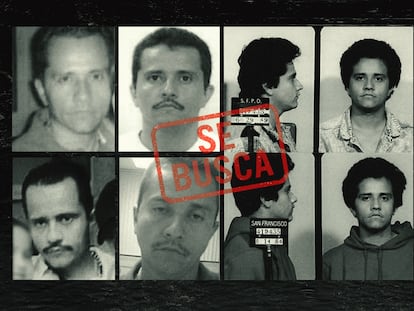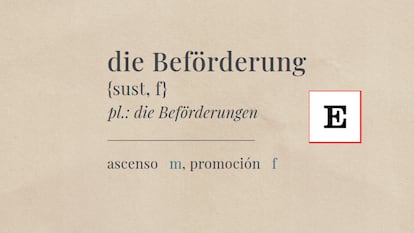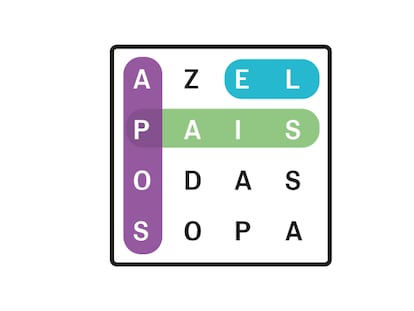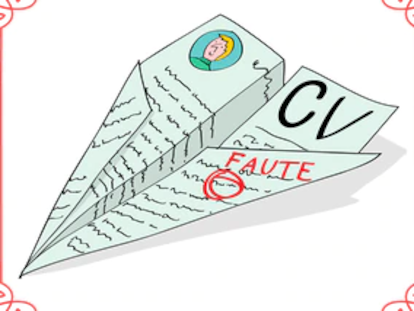El Mencho show: The glorification of violence in Mexico
A concert in Guadalajara that paid tribute to the leader of the Jalisco New Generation forces us to confront the social complacency that these criminal organizations enjoy in the country

Last month, a group of hooded men identifying themselves with the Jalisco New Generation Cartel (CJNG) recorded a video about the Izaguirre ranch, the cartel’s alleged recruitment and extermination site, which was exposed by a collective of mothers searching for their missing children.
In the video, the men — armed with AK-47s — distance themselves from the torture and murder involved in recruiting young people at the ranch in Teuchitlán. But opinions are divided as to whether the video was really made by members of Jalisco New Generation Cartel. Those who believe it is real say it is a sign that the Teuchitlán scandal has sent ripples through the ranks of the group.
In the video, the men grotesquely claim that while they may be criminals, they have a code. And they were not at all pleased when the searching mothers stumbled upon one of the cartel’s clandestine dumping grounds, exposing the depths of dehumanization that crime has reached in Mexico.
This outrage will have consequences, security experts warn. They predict that those responsible for not “cleaning up” the ranch and failing to prepare for unexpected visitors will be punished. Another expected response is that the cartel will attempt to soothe those who may have, for the first time, felt genuine disgust at so much violence.
In this context, the recent concert by the band Los Alegres del Barranco in Guadalajara takes on new meaning. It was a cartel-sponsored media spectacle worthy of a seasoned politician. Images of Nemesio Rubén “El Mencho” Oseguera — the leader of the Jalisco New Generation Cartel — were projected onto massive screens, while the band played a ballad in honor of the “lord of the roosters.” The message was clear: long live the criminals, long live Jalisco, and nothing to see here.
The concert took place at the Telmex Stadium in Guadalajara. The University of Guadalajara, which owns the venue, claims it is not responsible for the events. The Mexican government has called for an investigation.
But the audience at the concert enthusiastically echoed the bravado of those who have turned Mexico into a blood-soaked graveyard. This isn’t the first time something like this has happened, nor will it be the last. It’s hard to believe that every concertgoer approves of organized crime and its so-called codes, but the real question is: how have we reached a point where the violence that so often forces us to shut our eyes can also serve as entertainment for a Saturday night?
The latest public opinion poll published by EL PAÍS once again confirms that Mexicans recognize the country’s overwhelming security crisis. They understand the problem, but how much do they truly care? It has certainly never been what sways their vote, neither now nor in the past. The cartel has spread its tentacles to hundreds of businesses, and people know it. They are aware of the corner store that sells illicit goods, the young men prowling the streets at dusk, the lavish mansions where cartel bosses live, and the extra cash police officers pocket from the cartels. It’s not universal, as the president might argue, but it’s common enough that people have learned to live with it. With fear. With indifference. And on a Saturday night, sometimes even with enthusiasm.
The cartels — especially the Jalisco New Generation Cartel, now the most powerful in Mexico — are an unrelenting enterprise. They need a steady supply of young recruits to run their gigantic criminal empires, and they take them from neighborhoods where life offers few other possibilities. But poverty alone doesn’t explain everything. The spectacle surrounding organized crime in Mexico — the glamorization of its figures, the music, the culture — allures young people, much like Nazi symbolism once did. It’s the same seduction found in narco-themed TV series or literature that romanticizes the extravagance and terror of men who, in reality, possess minds even emptier than the so-called moral codes they boast about following.
Mexican President Claudia Sheinbaum has announced an agreement with the music industry to curb the glorification of cartel violence in popular songs. The goal is simple: to prevent young people from idolizing the criminals responsible for their communities’ suffering. To stop them from casually humming ballads about the very men who may have led to their neighbor’s death. To make sure they don’t admire the guns that popular singers flaunt in their photos, as if Mexico didn’t already know the cost of gun violence. In short, the aim is to ensure that young people don’t take pleasure in what repulses anyone with a sense of right and wrong. The effectiveness of this government measure remains to be seen, but the hope that one day — hopefully soon — events like the one in Guadalajara will no longer happen is certainly welcomed.
The cartels have two faces, as everyone knows. They torture a young man one moment, and lend money to a mother to take her child to the doctor the next. In the morning, they murder a taxi driver, and in the afternoon, they free a community from the thief who robs their cars. Today, they condemn a girl to prostitution, and tomorrow, they fund a university tuition. This double standard is how they operate, spreading the narrative that only those who misbehave receive punishment.
And this same moral code spreads among thousands of towns, neighborhoods, and urban peripheries, where people have turned a blind eye as television blared with reports of brutal murders, dismemberments, decapitations, kidnappings, and extortions. They believe that’s what happens for going down the wrong path. It won’t affect their own children. Yet they never ask themselves why thousands of young people end up on the wrong path, or when their own children might slide down the same slippery slope. The disease has become a pandemic. It would be reasonable to think that everyone should be immunized — not to tolerate so much pain, but to condemn it at the top of our lungs, screaming as if we were at a concert.
Sign up for our weekly newsletter to get more English-language news coverage from EL PAÍS USA Edition
Tu suscripción se está usando en otro dispositivo
¿Quieres añadir otro usuario a tu suscripción?
Si continúas leyendo en este dispositivo, no se podrá leer en el otro.
FlechaTu suscripción se está usando en otro dispositivo y solo puedes acceder a EL PAÍS desde un dispositivo a la vez.
Si quieres compartir tu cuenta, cambia tu suscripción a la modalidad Premium, así podrás añadir otro usuario. Cada uno accederá con su propia cuenta de email, lo que os permitirá personalizar vuestra experiencia en EL PAÍS.
¿Tienes una suscripción de empresa? Accede aquí para contratar más cuentas.
En el caso de no saber quién está usando tu cuenta, te recomendamos cambiar tu contraseña aquí.
Si decides continuar compartiendo tu cuenta, este mensaje se mostrará en tu dispositivo y en el de la otra persona que está usando tu cuenta de forma indefinida, afectando a tu experiencia de lectura. Puedes consultar aquí los términos y condiciones de la suscripción digital.
More information
Archived In
Últimas noticias
Most viewed
- Reinhard Genzel, Nobel laureate in physics: ‘One-minute videos will never give you the truth’
- Oona Chaplin: ‘I told James Cameron that I was living in a treehouse and starting a permaculture project with a friend’
- Pablo Escobar’s hippos: A serious environmental problem, 40 years on
- Why we lost the habit of sleeping in two segments and how that changed our sense of time
- Chevy Chase, the beloved comedian who was a monster off camera: ‘Not everyone hated him, just the people who’ve worked with him’











































